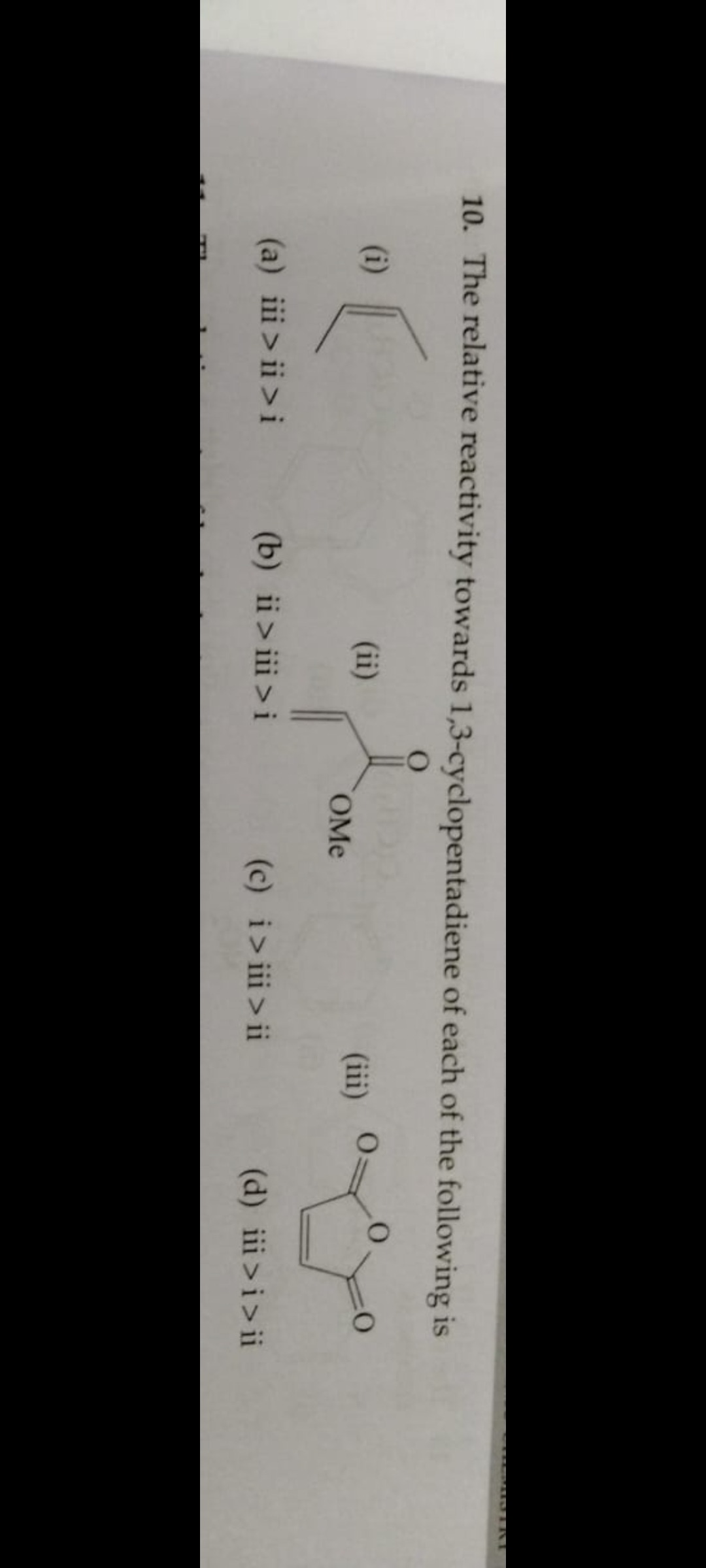Question
Question: The relative reactivity towards 1,3-cyclopentadiene of each of the following is (i) (ii) OMe (i...
The relative reactivity towards 1,3-cyclopentadiene of each of the following is
(i)
(ii) OMe
(iii)

iii > ii > i
ii>iii>i
i>iii > ii
iii>i>ii
iii > ii > i
Solution
The Diels-Alder reaction is a [4+2] cycloaddition between a conjugated diene and a dienophile. The reactivity of the dienophile towards an electron-rich diene like 1,3-cyclopentadiene is enhanced by the presence of electron-withdrawing groups on the double bond. We need to compare the electron-withdrawing ability of the substituents in the given dienophiles.
(i) Cyclohexene is a simple alkene. There are no significant electron-withdrawing or electron-donating groups directly attached to the double bond. Its reactivity as a dienophile is relatively low.
(ii) Methyl acrylate (CH2=CH-COOMe) is an α,β-unsaturated ester. The ester group (-COOMe) is an electron-withdrawing group due to resonance and inductive effects. This makes the double bond electron-deficient, increasing its reactivity as a dienophile.
(iii) Maleic anhydride is a cyclic anhydride containing a double bond conjugated with two carbonyl groups. Carbonyl groups are strongly electron-withdrawing. The presence of two strongly electron-withdrawing carbonyl groups directly attached to the double bond makes maleic anhydride a very reactive dienophile. Anhydrides are generally more activating than esters in Diels-Alder reactions.
Comparing the electron-withdrawing strength of the substituents on the double bond:
- In (i), there are no significant electron-withdrawing groups.
- In (ii), there is one ester group, which is electron-withdrawing.
- In (iii), there is a cyclic anhydride group with two carbonyls, which is strongly electron-withdrawing.
The order of electron-withdrawing strength of the substituents on the double bond is (iii) > (ii) > (i).
Since 1,3-cyclopentadiene is an electron-rich diene, the reactivity of the dienophile towards it increases with the electron deficiency of the double bond. Therefore, the order of reactivity is directly proportional to the electron-withdrawing strength of the substituents.
Order of reactivity: (iii) > (ii) > (i).
